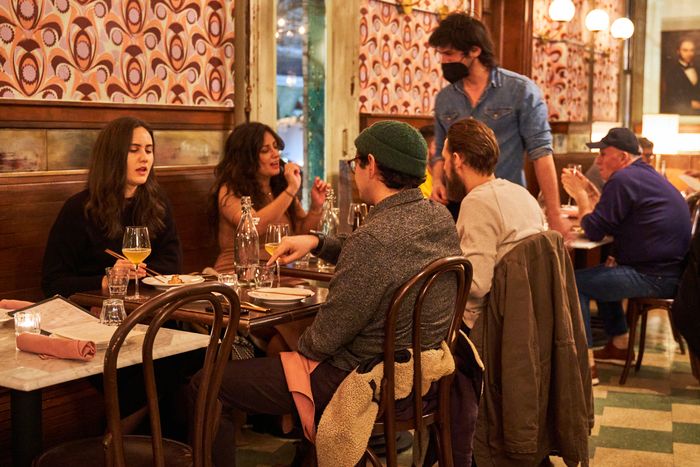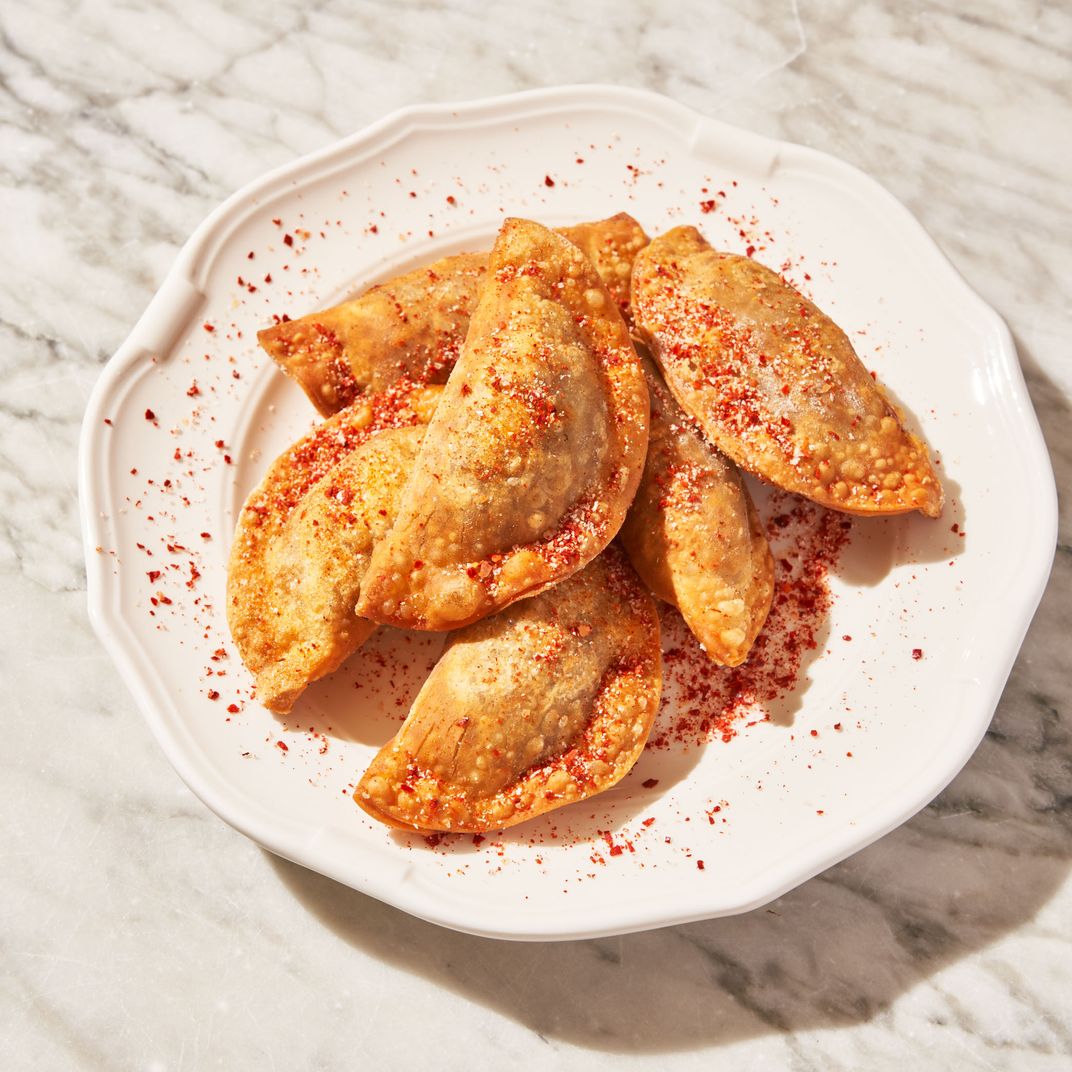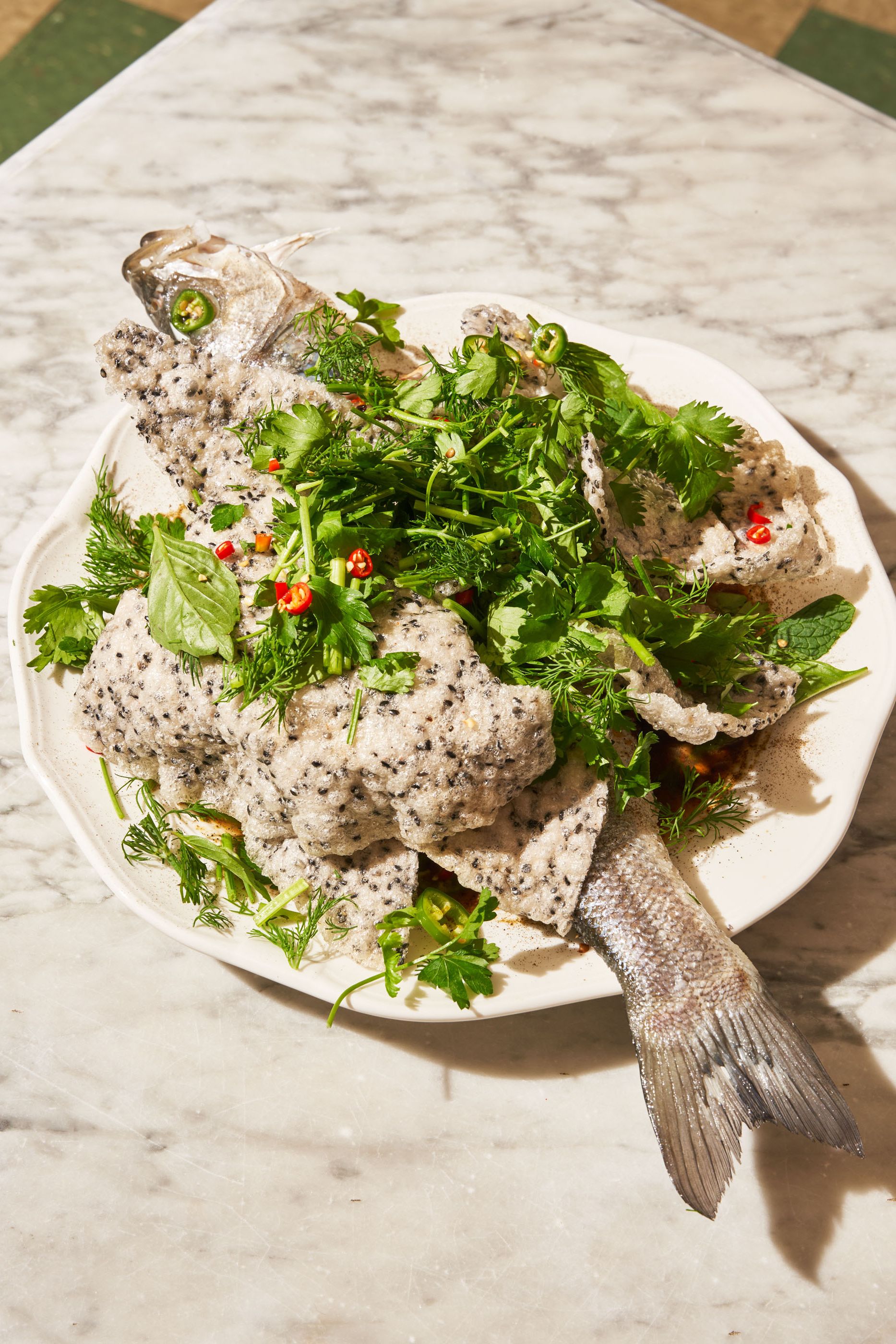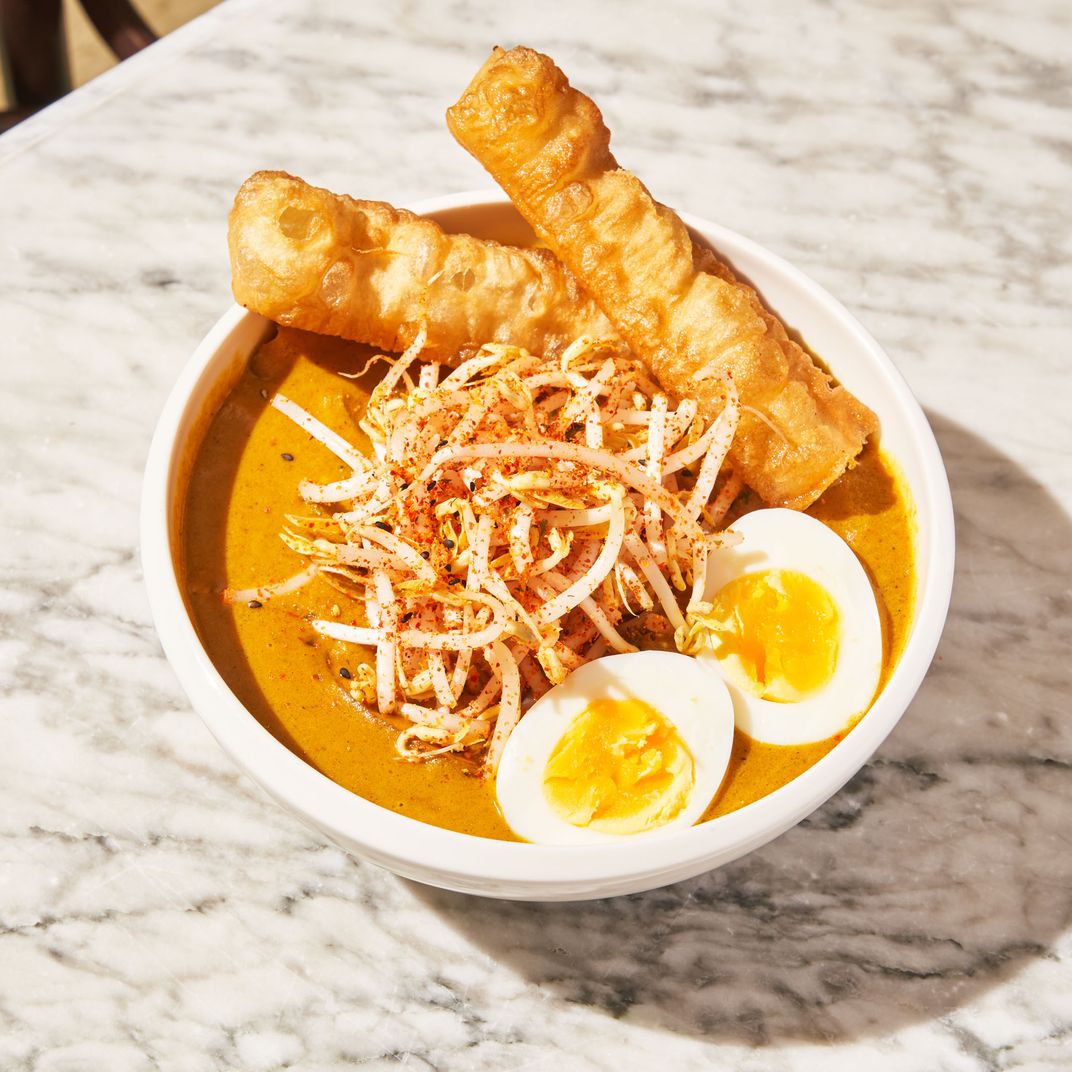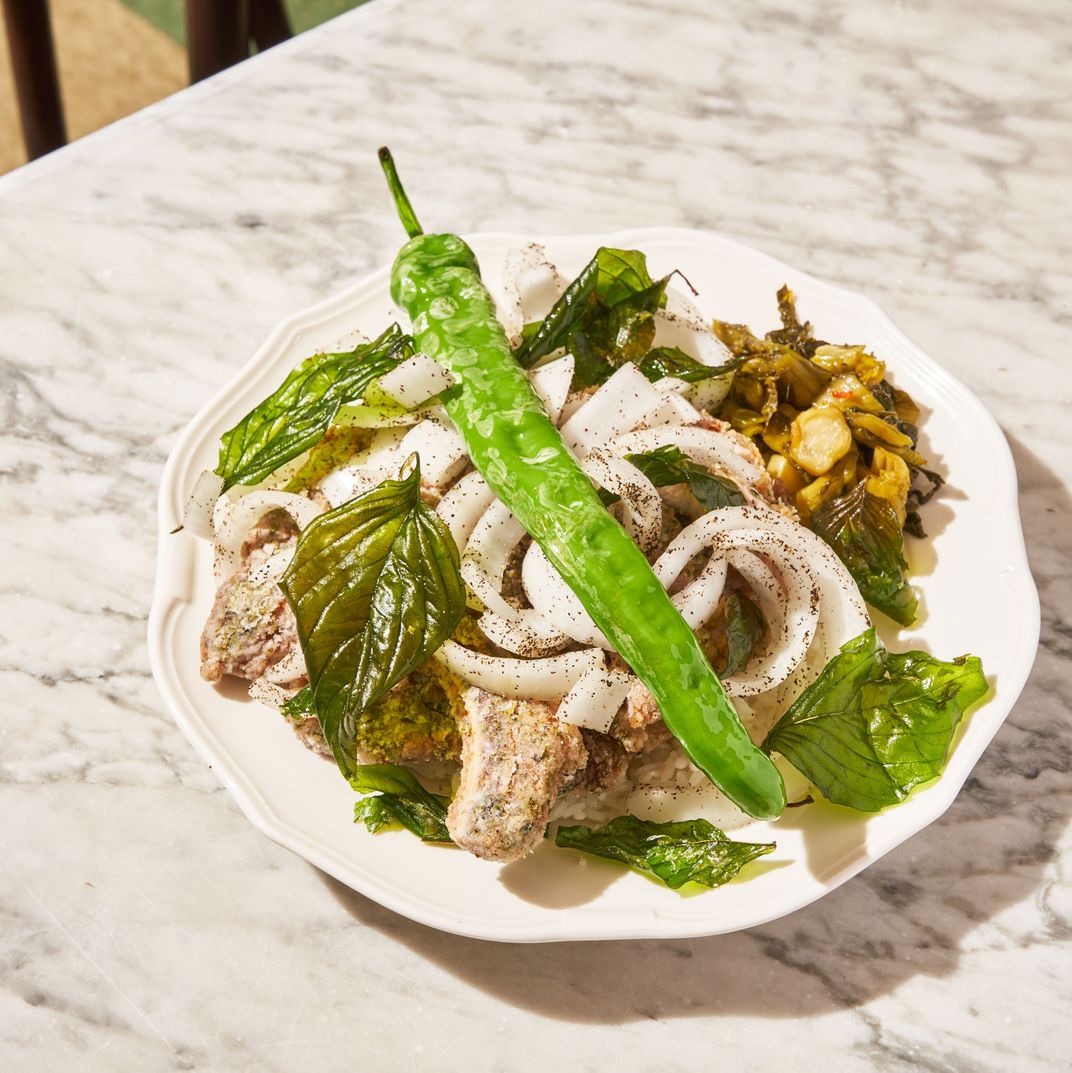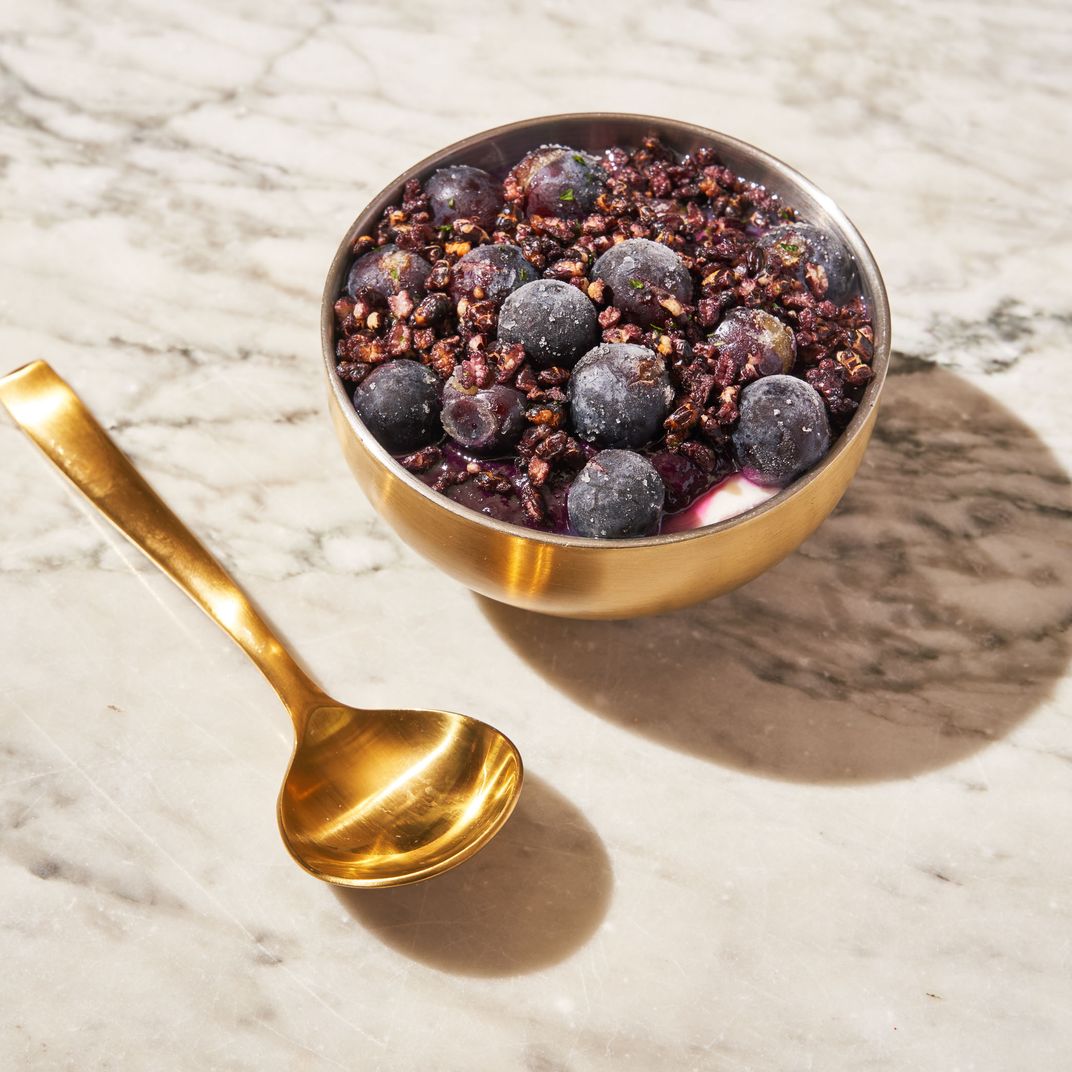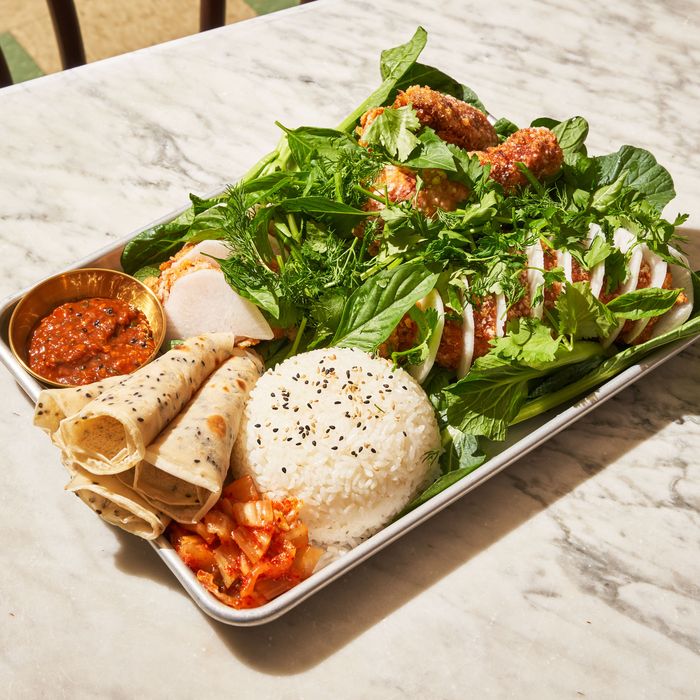
As one long plague year bleeds into the next, we can confirm now that there is such a thing as a COVID-era restaurant. Perhaps this establishment began life as a pop-up, so the room tends to be smallish in size, at least compared with the ungainly 200-seat mastodons that populated the Earth before it. The menu is smallish too, by yesteryear’s standards, and tends to focus on simple comforts reimagined in quirky, inventive ways (the fried chicken at Pecking House, the fish and chips at Dame). There is a sense of neighborly community to the cooking (because in COVID times, most patrons are from the neighborhood) and, to stretch the mammal-versus-dinosaur metaphor a bit further, a kind of full-service adaptability, which means it may be possible to get a fine cup of coffee in the late afternoon or a sandwich to enjoy in the evening while you drink yourself silly at the bar.
Porcelain, which appeared in 2019 on Woodward Avenue in Ridgewood, is one of these restaurants. The inviting, slightly disheveled space opened as an Austrian café after being commandeered by Martin Scorsese as a set for his lugubrious gangster film The Irishman. The cane chairs, café tables, and decorative old oil portraits on the walls look like remnants of the Austrian period, and the dark cherry bar was constructed by Scorsese’s prop people, who also left a properly scuffed ’50s-era linoleum-tile floor. A talented out-of-work chef from the neighborhood named Kate Telfeyan began hosting weekly pop-ups there, themed around her Instagram account, “Vaguely Asian,” and as word got around, she started to serve brunch and lunch and finally dinner.
Telfeyan is a refugee from the famously harsh Mission Chinese Food culture (she was head chef at the East Williamsburg location), and she has said she now wants to cultivate the opposite kind of atmosphere in both her kitchen and the front of the house. Food orders are taken at the bar, and servers bring the dishes to your table, which could be by the piano in one far corner of the room or at the couch by the window up front (it is always set for a party of two). It could be at the bar (filled with people drinking very nice negronis tinged with juniper), or it could even be outdoors on the frigid sidewalk, which is lined with tables and strung with lights, though you won’t find any toasty, sturdily constructed dining huts here because only prosperous pre-COVID restaurants can afford those.
The bountiful brand of Korean-Chinese fusion cooking has a similar modestly elegant style. Only two dishes on the dinner menu cost more than $25, the kimchee-brined fried chicken and the steamed whole fish — which is covered in coriander and set in a pool of vinegar, Sichuan pepper, and pickled mustard greens — and they’re large enough to feed a small family and are hoisted to the table on great metal trays. On my visits, we enjoyed these dishes with helpings of cool, fat wheat noodles tossed with bits of roast pumpkin and crisp fried dumplings stuffed with finely ground deposits of Korean soondae (blood sausage). The excellent fried pork chop sliced into delicate pieces costs just $19 and is dappled with dried nori, among other things, while the house curry is flavored with cashews and served with the kind of crunchy deep-fried fritter you get with your bowl of morning congee on the streets of Taipei or Hong Kong.
Crispy soondae wonton.
Steamed whole branzino.
Cashew curry.
Nori fried pork chop.
Tofu pudding.
Crispy soondae wonton.
Steamed whole branzino.
Cashew curry.
Nori fried pork chop.
Tofu pudding.
Telfeyan has a taste for innovation and the kind of showmanship that used to be the hallmark of gonzo he-man kitchens like Mission Chinese, but she also has a talent for plant-based cooking, which gives many of her experiments a subtle quality. In addition to the aforementioned cashew curry, which we ate with golden metal chopsticks and bowls filled with steamy rice, I enjoyed the shaved, barely cooked “hot and sour” potatoes in a tangy sauce made with black vinegar, Shaoxing wine, and sesame oil and the strips of crinkled yuba tossed Sichuan-style with three kinds of chiles. If you feel like walking on the wild side, the dish to get is the dan dan lasagna, which the kitchen layers with mushrooms and whipped tofu instead of the usual Italian fillings and tops with perhaps a little too much black-sesame sauce.
In the tradition of adaptable establishments everywhere, Porcelain’s very good all-day menu, which until just a few weeks ago began at 11 a.m., was recently suspended for the cold Omicron months, with the idea, according to the manager, of restarting it when the weather heats up. For the record, and in the fervent hope that this day will come, I recommend the rib-sticking tomato egg noodles for sitting outdoors on a warm weekend afternoon in one of the violet-colored plastic wicker chairs or anything with the word sandwich at the end of it, especially the mortadella with egg and cheese or the spicy “crispy lamb” stuffed into a crunchy ciabatta bun. The fusion café pastries like the ginger-cinnamon mochi cake are very nice too, and so are the tofu puddings, a version of which is served in the evening, sprinkled with kernels of popped black rice and small frozen Concord grapes.
Recent restaurant reviews
- Restaurant Review: A Bistro With Shish Barak
- Restaurant Review: At the Altar of Korean Fried Chicken
- Corima Has Potential — and Excellent Tortillas



